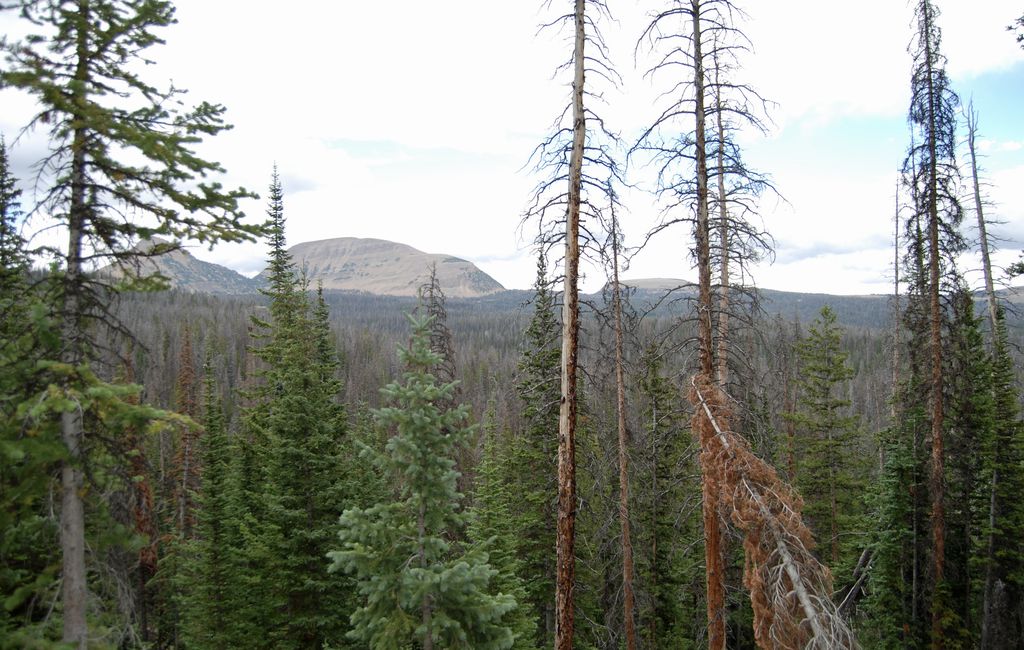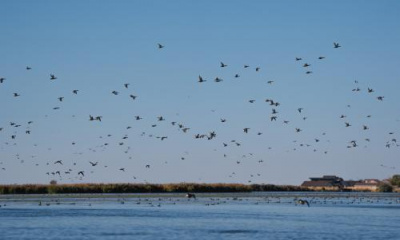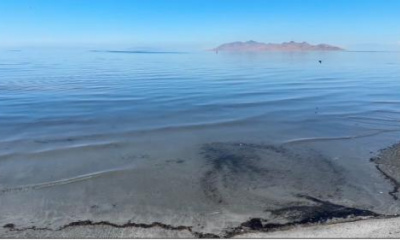Do trees suck? You bet they do, and it’s time we do something about it, according to a group of conservative Utah lawmakers.
Claiming “overgrown” forests are guzzling Utah’s water resources dry, rural members are now calling for a major logging initiative as the best hope for saving the shrinking Great Salt Lake and Lake Powell, despite a lack of scientific evidence that tree removal would make a big difference.
Water conservation and efficiency are fine, but such measures are not enough to replenish Utah’s drought-depleted reservoirs and avert the ecological disaster unfolding at the Great Salt Lake, according to presentations Thursday before the Legislature’s “Yellow Cake Caucus,” a group of conservative lawmakers organized by Rep. Phil Lyman, R-Blanding.
Utah’s 5 million acres of forests are crowded with 100 to 200 trees per acre, about 10 times the densities in the 1800s, Randy Julander, a retired federal hydrologist, told the caucus gathering. And the trees on about a quarter of this land are standing dead because there isn’t enough water in the ground to sustain them, he added.
“The forests we have today have way too many trees,” said Julander, who led the Natural Resources Conservation Service’s Utah snow survey for years. “Too many trees, the wrong kinds of trees, and the wrong age class of trees on many of the forests that we see sitting around here. So forest management has a critical role in producing streamflow.”
Ecology professor Ben Abbott, however, cautioned against comparing today’s forests with those of the late 19th century.
“There was expansive wholesale over logging of our forests at that time,” Abbott said after viewing the caucus meeting on Zoom. “You look at some of these photos, and maybe there were 10 to 20 trees per acre out there. That was because all the trees that could be used for timber and fuel wood were cut down. It was extremely degraded forest ecosystems.”
Named for the uranium product used to generate nuclear power, the Yellow Cake Caucus was organized by Lyman last year with the goal of advancing the interests of rural Utah. It meets every Thursday where a dessert by the same name is served.
Julander was the main witness in Lyman’s case that there are better ways out of Utah’s water crisis than forcing growers to use less water on alfalfa and other thirsty crops. Prompting Lyman to discuss forest thinning at the caucus’s first meeting of the session was a letter sent last week by Salt Lake County Council Member Dea Theodore to legislative leadership, demanding greater focus on restoring forest health to address Utah’s growing water crisis.
“The trees in our over-grown forests and other non-native, noxious trees along our rivers and streams are consuming trillions of gallons of water that would otherwise flow downstream to the Great Salt Lake. Many of our forests are already in desperate need of tree thinning due to high and extreme fire danger,” states Theodore’s Jan. 13 letter, which was cosigned by several Yellow Cake members and rural county commissioners.
“The thinning of overgrowth in the Great Salt Lake Basin would restore over 1.5 million acre-feet of water per year to the Great Salt Lake,” says the letter, which doesn’t cite sources for the claim, “enough to have the Lake on its way to restored water levels over the next 5 years.”
Coincidentally, the U.S. Forest Service on Thursday announced major investments in forest health arising from the Bipartisan Infrastructure Law, some of which target Utah forests for thinning, prescribed fire and other treatments aimed at reducing wildfire risk. Some $18 million will be spent on the central Wasatch and western Uinta mountains in the program’s first year, according to Intermountain Regional Forester Mary Farnsworth.
While many of Julander and Theodore’s assertions about poor forest health are beyond dispute, their proposed remedy for Utah’s water problem is not grounded in science, according to Abbott and other academic Utah scientists.
“There are some nuggets of truth in there,” Abbott said. “Is this [logging] a real solution for the Great Salt Lake? That’s where the evidence really falls apart. Water yield increases following either mechanical tree thinning or wildfire are not guaranteed. There has been over 100 years of research on this topic, using paired watershed studies.”
In such studies, researchers compare how watersheds with similar vegetation, aspect, soil type, elevation and other elements respond after a disturbance in which trees are killed, whether it’s through logging, insects or wildfire.
“It is not a simple response. You can see no change in water yields. You can see decreases in water yields observed in many areas affected by pine beetle outbreaks,” he said. “You can see shifts in when the water comes out in the watershed, often shifting earlier in the year when you don’t necessarily want it to be coming out.”
Another critical issue Abbott raised is water quality, which can be degraded after trees die or are removed.
“Let’s say that you do have large vegetation reduction in a watershed, enough that you see an increase in streamflow,” he said, “then almost always that’s accompanied by release of pollutants from the soil, including erosion, that create all of these water infrastructure problems downstream.”
A Brigham Young University professor, Abbott led the recent presentation by Utah scientists calling on the Legislature to take action this session to ensure more water reaches the Great Salt Lake to stave off its ecological collapse, which has already begun. The group argued Utahns, especially alfalfa growers who account for most of the state’s water use, must reign in waste so that more water is available in the environment to support vital ecosystems.
Abbott applauded Julander for pointing out the ecological role of wildfire in forest health. The poor condition of the West’s forest can be largely attributed to fire suppression, although overgrazing and past logging practices also played a role.
“Having more prescribed burning would have a lot of benefits for forest health. That’s been proposed by the research and management community for a long time,” Abbott said.
The rise of fire suppression in the early 20th century enabled conifers to displace millions of acres of aspen, a species that is not only resilient to fire, but also helps increase streamflows, Julander told the caucus. Without regularly occurring fires to wipe out pines and furs, these species have all but replaced aspen in many places to the detriment of overall forest health.
“I see trees, particularly conifers, as the problem,” Julander said. “In order to have a forest, you have to have trees. Trees are a wonderful thing. But when you look at it specifically in terms of water production, trees are the enemy, particularly conifers.”








